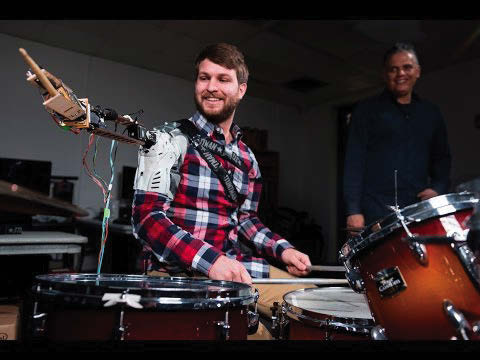
NEW DELHI (TIP): Using ALMA, the most powerful radio telescope in the world, scientists have for the first time observed details of how a massive star is born within a dark cloud core about 10,000 light years from Earth. ALMA (Atacama Large Millimetre/submillimetre Array) located in Chile was able to penetrate the gigantic cloud of gases thought to be 500 times the mass of the Sun and many times more luminous, and see the star forming in its womb.
This is the largest star to be seen forming ever. The researchers saw how matter is being dragged into the centre of the gaseous cloud by the gravitational pull of the forming star – or stars – along a number of dense threads or filaments. These threads extend to upto 3.26 light years, that is over 30 trillion kilometers.
The international research team of British, German, Italian and French astronomers will publish their findings in a forthcoming issue of the journal Astronomy and Astrophysics. “The remarkable observations from ALMA allowed us to get the first really in-depth look at what was going on within this cloud,” said lead author Dr Nicolas Peretto, from Cardiff University.
“We wanted to see how monster stars form and grow, and we certainly achieved our aim. One of the sources we have found is an absolute giantthe largest protostellar core ever spotted in the Milky Way.” “Even though we already believed that the region was a good candidate for being a massive star-forming cloud, we were not expecting to find such a massive embryonic star at its centre.
This cloud is expected to form at least one star 100 times more massive than the Sun and up to a million times brighter. Only about one in 10,000 of all the stars in the Milky Way reach that kind of mass.” Different theories exist as to how these massive stars form but the team’s findings lend weight to the idea that the entire cloud core begins to collapse inwards, with material raining in towards the centre to form one or more massive stars.
Co-author Professor Gary Fuller, from the University of Manchester, said: “Not only are these stars rare, but their births are extremely rapid and childhood short, so finding such a massive object so early in its evolution in our Galaxy is a spectacular result.” “Our observations reveal in superb detail the filamentary network of dust and gas flowing into the central compact region of the cloud and strongly support the theory of global collapse for the formation of massive stars.”
The University of Manchester hosts the Science and Technology Facilities Council (STFC)- funded support centre for UK astronomers using ALMA, where the observations were processed. Team member Dr Ana Duarte-Cabral, from the Universite de Bordeaux, said: “Matter is drawn into the centre of the cloud from all directions but the filaments are the regions around the star that contain the densest gas and dust and so these distinct patterns are generated.”
Dr Peretto added: “We managed to get these very detailed observations using only a fraction of ALMA’s ultimate potential. ALMA will definitely revolutionise our knowledge of star formation, solving some current problems, and certainly raising new ones.”




Be the first to comment